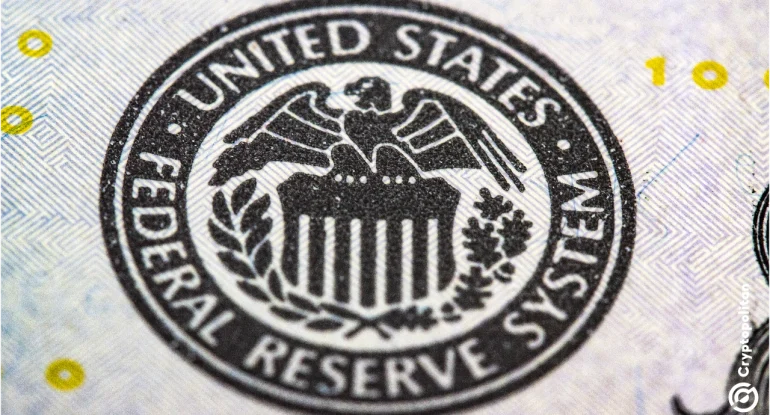Fed Minutes: Trump ‘Liberation Day’ Impact on FOMC

The financial world is waiting on tenterhooks today for the release of the minutes from the last FOMC meeting. These minutes are expected to reveal just how concerned the Federal Reserve became about the rising threat of stagflation and, crucially, the extent to which their concerns were shaped by what’s being called ‘Liberation Day.’
During their meeting held on March 18th and 19th, the folks in charge at the US central bank acknowledged a significant shift in their economic outlook. They started out feeling optimistic about inflation cooling down while growth remained steady. However, that feeling morphed into uncertainty, even worry, as they considered the potential impact of new US import taxes. The fear was that these taxes could simultaneously push inflation up while slowing down demand, economic growth, and possibly even job creation.
FOMC minutes drop tomorrow at 2PM ET.
We’ll get a deeper look into the Fed’s thinking from the last meeting — and possibly some clues on upcoming rate cuts.
Volatility is almost guaranteed.
Smart money will be watching closely.
Have your levels marked
Be ready. pic.twitter.com/aZlWJabsAq
— Bitcoin Ape (@bitcoinape_) April 8, 2025
It’s worth remembering that these initial concerns were based on Trump’s first trade announcements and other actions taken since his return to the White House on January 20th. Even at that March meeting, updated forecasts from these policymakers already indicated that they expected slightly slower growth and a bit more inflation than previously anticipated.
Despite these shifts in expectations, the plan at that time was still to cut interest rates by half a percentage point before 2025 ended.
Stagflation Picture from the Fed FOMC Minutes: What to Expect?
Fast forward two weeks after that meeting: Trump dropped a bombshell, announcing new tariffs on a wide range of countries, far more aggressive than many had predicted. These new tariffs dramatically increased the average tax rate on goods coming into the US, jumping from around 2.5% to a hefty 25% or even higher. The immediate reaction was a significant downturn in stock markets across the globe.
Considering this timeline, the minutes we’re about to see might not fully capture the true extent of policymaker worries, especially as they likely intensified after April 2nd in response to these tariffs.
However, these minutes are still valuable. They typically offer crucial insights into the economic predictions made by Fed staff and the various economic scenarios they were considering. Importantly, they can also reveal the level of conviction policymakers held regarding different aspects of the economic future.
Analysts at the consulting firm led by former Fed Governor Larry Meyer suggest that the last meeting essentially established a baseline – a point of reference from which to measure how Trump’s policy changes might alter previous economic forecasts.
Fed’s Economic Outlook: Balancing Act Between Stagnation and Recession
Looking at the economic data from March, the unemployment rate ticked up slightly to 4.2%, a bit higher than the month before. Interestingly, this increase wasn’t due to job losses; businesses actually added over 200,000 jobs, which was the primary factor pushing the unemployment rate up.
The Federal Reserve’s preferred inflation gauge, the Personal Consumption Expenditures Price Index, showed a 2.5% increase over the year in February. That’s only half a percentage point above the central bank’s 2% inflation target.
However, inflation had remained relatively steady since September, and now these new tariffs were looming just on the horizon. There are even early indications that increased demand for cars, imported wines, and other goods slated to be taxed might be starting to ripple through the economy.
Now, the Fed faces a tricky task: trying to decipher a clear macroeconomic signal from a period likely filled with conflicting noise. Some key prices, like gasoline, might fall due to reduced demand, while others, particularly for many imported goods, could rise because of the tariffs. Adding another layer of complexity, the recent stock market slump could dampen consumer spending in the longer term.
Experts believe that monetary policy could be in for a period of slow adjustments, followed by potentially rapid shifts, as the Fed waits for clarity on whether Trump’s tariffs and other policy changes will primarily drive up prices, slow down growth, or create a combination of both. This uncertainty echoes the Fed chairman’s own statements, emphasizing that their future actions are heavily contingent on Trump’s policy decisions.
Samuel Tombs, Chief US Economist at Pantheon Macroeconomics, noted on Tuesday that declining oil and gas prices, along with a 30% decrease in shipping costs since February, should offset about a quarter of the negative impact that tariffs will have on after-tax household income.
However, the stock market downturn has already wiped out a staggering $5.5 trillion in market value for US households since the end of last year. This wealth destruction could translate into a significant drop in consumer spending, potentially as much as $140 billion.
Cryptopolitan Academy: Coming Soon – A New Way to Earn Passive Income with DeFi in 2025. Learn More











